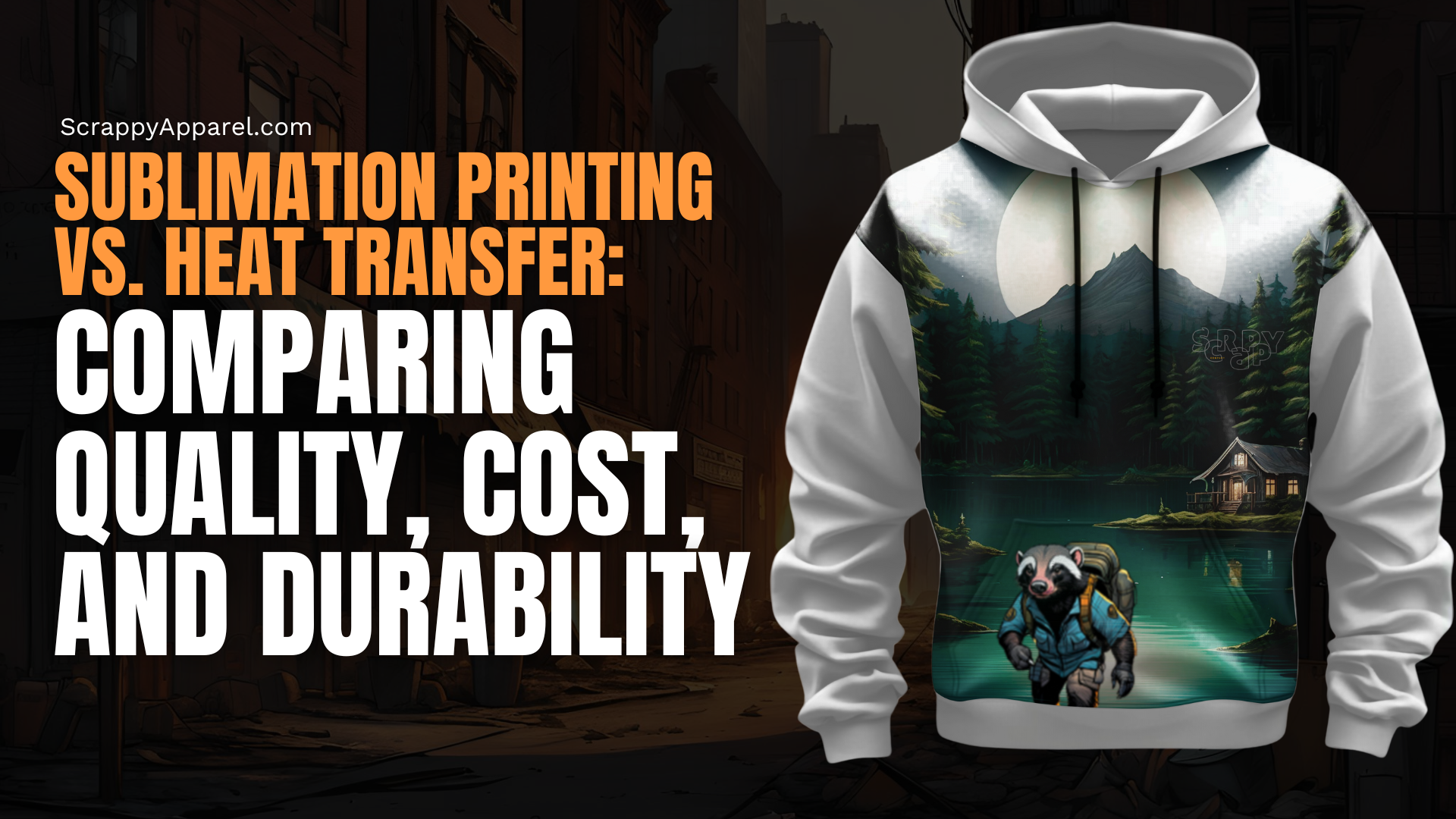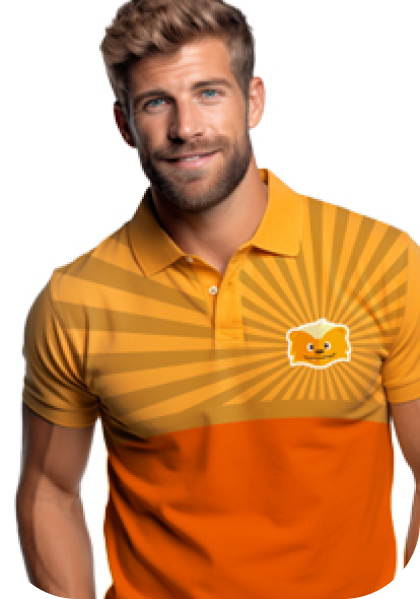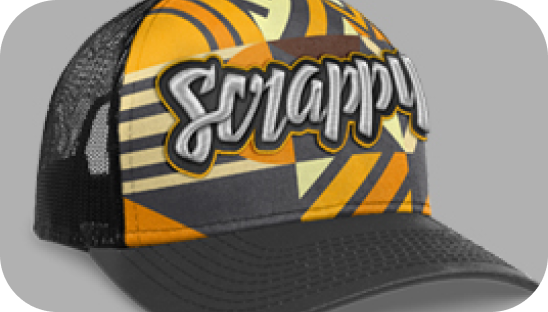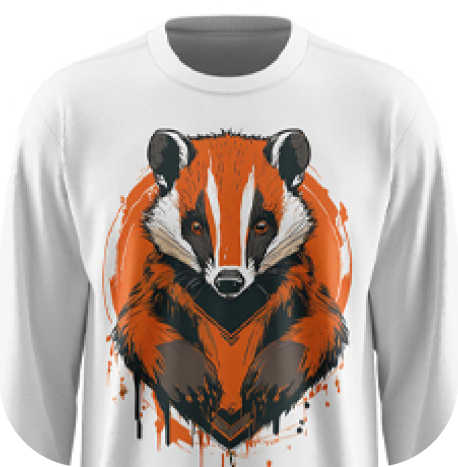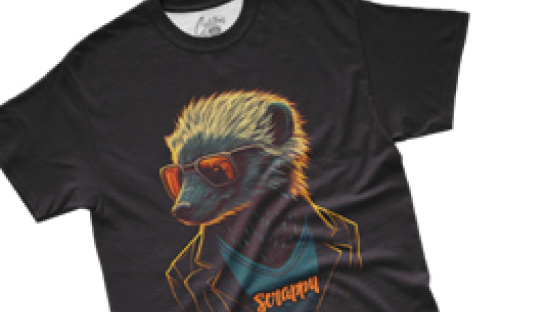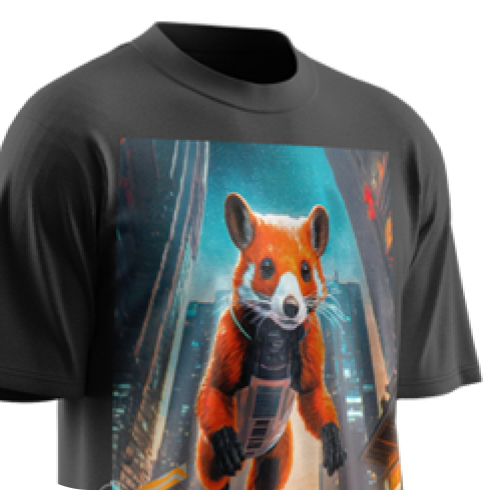How Does Sublimation Work? The Science Behind Vibrant, Long-Lasting Prints
Do customers complain that their once-bold tees now look like thrift-store throwaways?
That’s not just wear and tear. It’s a credibility leak that can drain repeat sales overnight.
Sublimation printing solves the problem at the molecular level.
By turning solid dye straight into gas and locking it inside polyester fibers, it gives you retail-grade color that refuses to peel, crack, or fade.
So, how does sublimation achieve these incredible results? Today, our experts at Scrappy Apparel are here to break it all down for you.
Manufacture Vibrant, Fade-Proof Apparel With Scrappy Apparel


Sublimation 101: From Solid Dye to Fiber-Bound Color
Ever wish you could bottle a rainbow, pour it straight into a t-shirt, and watch it stay brilliant forever?
That’s essentially what sublimation does, only it swaps the paint brush for chemistry.
This is the chemistry that turns raw polyester into a walking billboard.
Instead of slapping wet ink on top of fabric like traditional screen printing, we crank up the heat until solid dye particles leap straight to a gas.
The vapor dives into open polyester pores, cools in an instant, and crystallizes inside the thread itself. There’s no messy liquid stage, no chance for color to smudge, smear, or dilute.
Here’s the play-by-play of how that transformation happens under the heat press:
Print the Transfer
- Special sublimation inks are jetted onto coated transfer paper.
- At room temp. the dye is a solid powder locked inside resin micro-capsules.
Hit the Heat Press
- Paper meets a white or light-colored polyester garment.
- Around 400 °F (204 °C), the solid dye vaporizes, skipping the liquid stage entirely.
- Polymer chains in the fabric expand, opening tiny pockets that welcome the gaseous dye.
Cool & Lock
- As heat drops, the polymer closes and the dye re-solidifies inside the fiber wall.
- Result: the graphic becomes part of the fabric itself—no ink layer, no hand feel, no way to scrape it off.
Because the color lives inside the thread, you get jaw-dropping vibrancy, wash-after-wash consistency, and a softness screen-printed plastisol can’t replicate.
Why Sublimation Rules the Apparel Game in 2025
Sublimation isn’t just a printing method… it’s the cheat code brands are using to win 2025’s color-driven, speed-obsessed apparel market.
From limitless hues to lightning-fast turnarounds, here’s why the process leaves legacy inks in the dust.
Unlimited Color & Photoreal Detail
Forget four-color limits or pricey spot hues. Sublimation speaks fluent RGB.
Since the ink is digitally jetted, you can drop in millions of tones, razor-sharp gradients, and high-resolution photography without a penny of “extra color” up-charges.
That means vivid sunset fades, skin-tone subtleties, and comic-book line work all print as crisply as they look on your monitor (no compromise, no hidden fees).
Edge-to-Edge Coverage
Want a galaxy swirling from cuff to cuff? A corporate step-and-repeat that wraps 360° around a tee? Sublimation prints the fabric panel before it’s cut and sewn, giving you true seam-to-seam continuity.
Patterns align perfectly at shoulders, side seams vanish into design, and your art isn’t boxed into a boring rectangle. In fact, it owns the entire garment.
Feather-Light Feel
Because the dye lives inside polyester fibers, it adds zero thickness. The result is a shirt that weighs (and breathes) exactly like the blank it started as.
Athletes stay cool, festival-goers dodge the dreaded “sweat patch,” and gamers forget they’re even wearing merch while grinding through late-night streams. All the eye candy, none of the plastic.
Lifetime Durability
Cracking? Impossible. Peeling? Can’t happen. Fading? Only if the sun burns out first.
Sublimated color is UV-stable and wash-proof because it’s molecularly bonded to the fabric.
Jerseys survive slide tackles, merch tables survive five-day tours, and corporate uniforms still pop after a year of industrial laundering.
Brand-Safe Consistency
Nothing torpedoes credibility faster than off-shade logos. Sublimation’s digital workflow locks in ICC profiles and Pantone recipes so the navy on batch #1 matches batch #1000.
Whether you’re replenishing inventory, expanding into cut-and-sew hoodies, or dropshipping one-offs, color fidelity stays laser-accurate… giving every customer the same polished, professional experience.
Inside the Heat Press: A Closer Look at the Science
Step past the design screen and into the engine room of sublimation… the heat press!
The magic hinges on three tightly choreographed variables (temperature, time, and pressure) and each must be dialed in with lab-grade precision to unlock the eye-popping color and lifetime durability buyers rave about.
These are the steps of the process:
- Sublimation Inks: Formulated with disperse dyes engineered to gas out precisely at 380–410 °F. They’re translucent, so the garment color underneath matters.
- Polyester Only, Please: Dyes bond to polymer chains. Cotton lacks those binding sites. Aim for 100% poly or a high-poly blend (≥ 65 %) for true saturation.
- Pressure Matters: Medium, even pressure (~40 psi) keeps the transfer flush with the fabric and prevents ghosting. Too much and you’ll emboss press lines; too little and you’ll get patchy spots.
- Time & Temperature Sweet Spot: Typical cycle: 45 seconds at 400 °F. Deviate and you risk muddy color (under-time) or blurry bleed (over-time). Calibrated equipment is non-negotiable.
The Advantage Sublimation Offers You
Sublimation sits at the heart of modern apparel because it embeds dye inside polyester fibers. That chemistry unlocks unlimited colors for one flat cost, edge-to-edge graphics that never crack, and a feather-light “no-hand” feel shoppers love.
High-speed printers with tighter dot placement push jobs through faster, so you can drop fresh collections while buzz is high and keep every unit looking photorealistic.
Here’s why brands love sublimation…
- Unlimited gradients or photo art without extra setup fees
- Prints that shrug off sweat, UV, and weekly wash cycles
- Consistent color across 10,000-unit runs

Why Sublimation Fabrics Rule
Sublimation fabrics are built for comfort and durability: moisture-wicking jerseys for athletes, poly-rich fleece that stays plush, UPF-rated knits for sun-soaked crews, and recycled-poly options that add a sustainability angle without losing vibrancy.
Private-label finishes like branded hang tags and neck labels round out the retail-ready look.
Performance-Driven Fabric Choices
- Lightweight jerseys for high-output teams
- Mid-weight fleece hoodies and sweatshirts that keep color saturated
- UPF polos and tees for outdoor activations
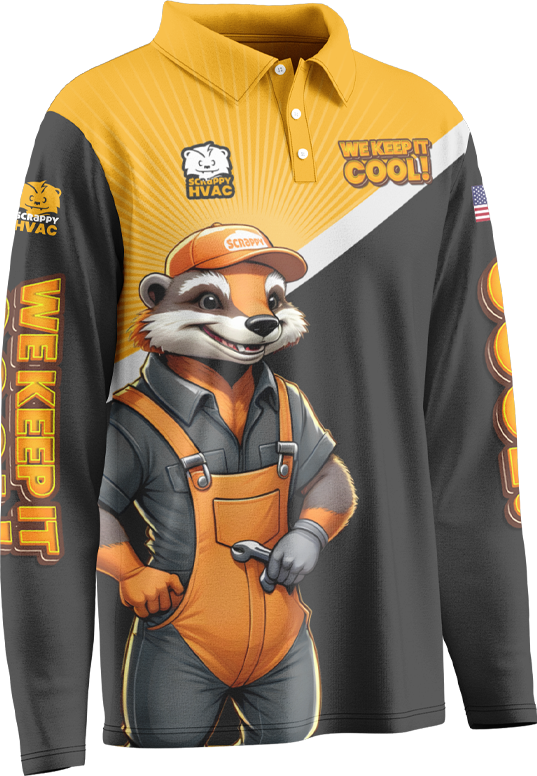
Scrappy’s Expert Approach to Sublimation Printing
18 years in the field have shown us the usual culprits: cotton garments that reject dye, seam “ghost” lines from printing on pre-sewn pieces, and faded graphics from bargain inks.
We print only on fabrics that are at least 65% polyester, lay panels flat before sewing, calibrate heat-press platens, and wash-test every batch.
Those guardrails catch problems long before a shipment leaves the dock.
Headaches avoided:
- Cotton or dark bases that mute color
- White creases at seams or under arms
- Temperature drift that dulls prints
- Premature fading from low-grade consumables
Our Retail-Ready Workflow
- Design & Proofing: Upload artwork; we return calibrated proofs for approval.
- Panel Printing: High-speed heads lay unlimited colors on cut panels.
- Cut-and-Sew Assembly: Panels are stitched for true 360-degree coverage.
- Layered QC: Color, fit, and construction pass separate inspections, plus wash-tests.
- 4PL Fulfillment: We store, pick, pack, and ship on schedule so every launch lands smoothly.
Scale Without Sacrifice with All-Over Sublimation Printing
Sublimation with Scrappy Apparel eliminates screen fees and ink swaps, keeping unit costs predictable even as orders climb from 1,000 to 10,000 pieces.
Bring your boldest artwork. We will supply fiber-deep color, rigorous QA, and an end-to-end supply chain that lets you scale without stress.
Send us your order today and see how effortless all-over sublimation can be.




